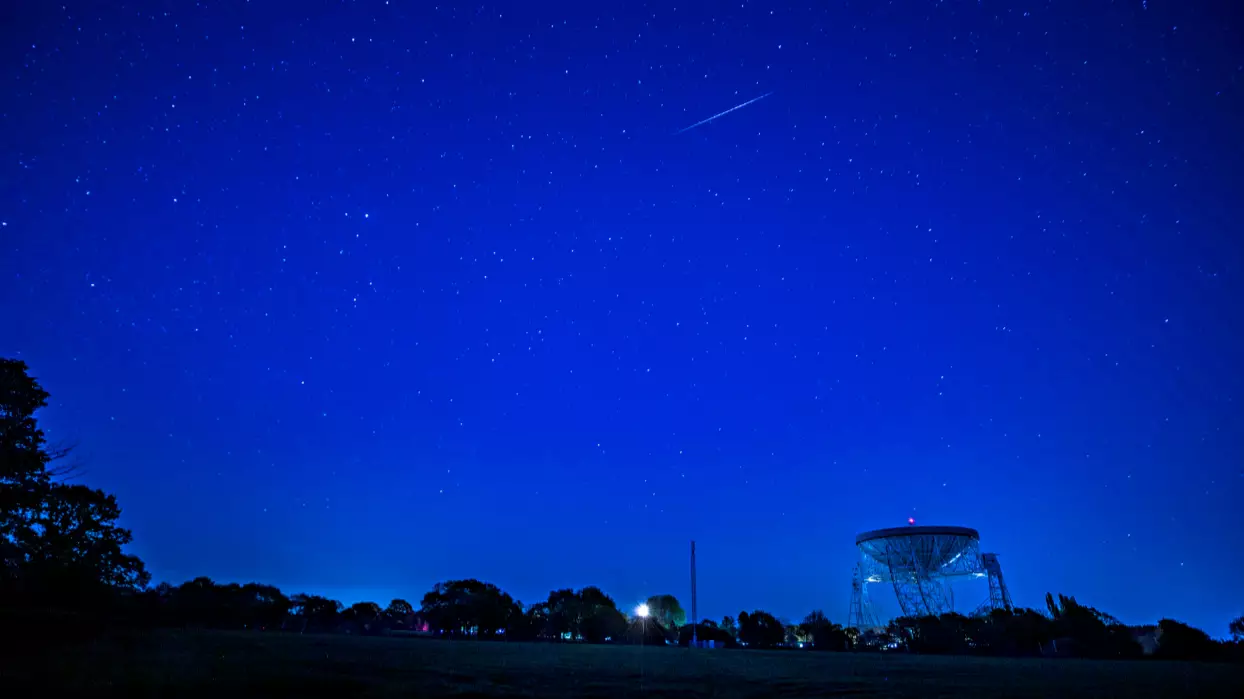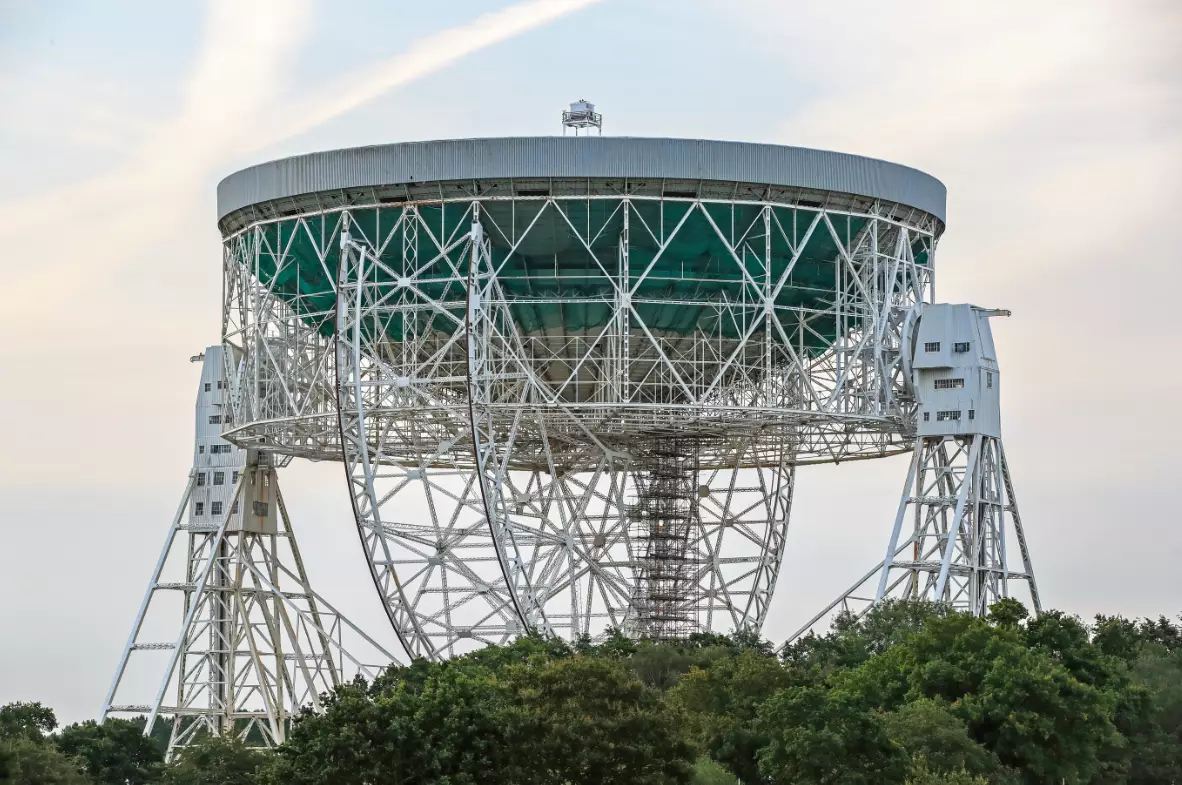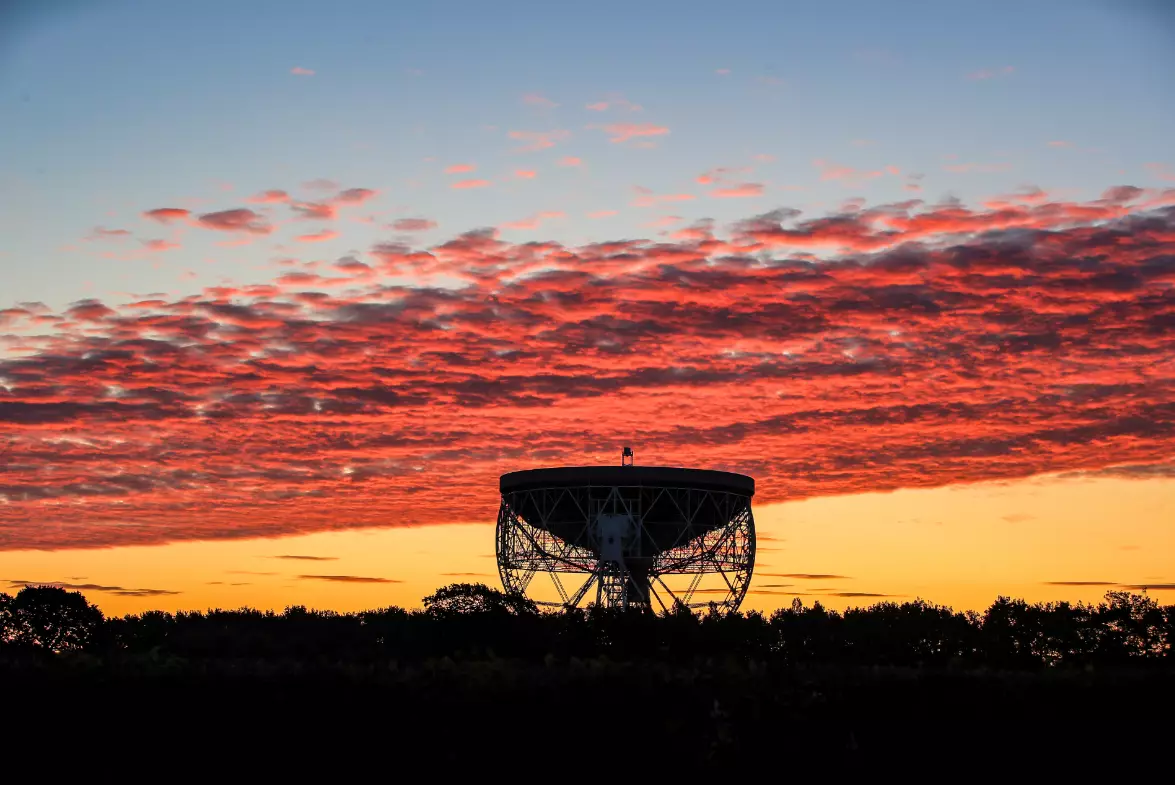
Scientists have discovered fast radio bursts from deep space that are repeating in a pattern.
An international team led by astronomers at Jodrell Bank Observatory in Macclesfield, Cheshire, have been carrying out a four-year 'observing campaign' using the Lovell Telescope.
The astronomers have been studying an object known as a 'repeating fast radio burst' (FRB), which they say emits very short duration bright radio pulses.
Advert
Using these 32 bursts that were discovered during the campaign, along with data from previously published observations, the research team discovered that the emission from the FRB known as 121102 follows a cyclic pattern.
They found that the radios bursts were observed in a window lasting approximately 90 days, followed by a silent period of 67 days - with the same pattern then repeating every 157 days.

Kaustubh Rajwade of The University of Manchester, who led the new research, said: "This is an exciting result as it is only the second system where we believe we see this modulation in burst activity.
Advert
"Detecting a periodicity provides an important constraint on the origin of the bursts and the activity cycles could argue against a precessing neutron star."
The University of Manchester said the discovery provides an 'important clue to identifying the origin of these enigmatic fast radio bursts', as the regular sequence in the burst activity could imply that the powerful bursts are 'linked to the orbital motion of a massive star, a neutron star or a black hole'.
The existence of FRBs was only discovered in 2007, and were initially thought to be one-off events related to a cataclysmic event, such as an exploding star.
This idea partly changed once FRB 121102 - which was originally discovered with the Arecibo radio telescope on November 2 2012 - was found to repeat in 2016, but until now no one has recognised that the bursts were actually organised in a regular pattern.

Advert
The team have confirmed in a new paper published in Monthly Notices of the Royal Astronomical Society that FRB 121102 is only the second repeating source of FRBs to display such periodic activity.
They found that the the timescale for this cycle is almost 10 times longer than the 16-day periodicity exhibited by the first repeating source, dubbed FRB 180916.J10158+56, which was recently discovered by the CHIME telescope in Canada.
Duncan Lorimer, Associate Dean for Research at West Virginia University - who, along with PhD student Devansh Agarwal, helped develop the data analysis technique that led to the discovery - said: "This exciting discovery highlights how little we know about the origin of FRBs.
"Further observations of a larger number of FRBs will be needed in order to obtain a clearer picture about these periodic sources and elucidate their origin," he added.
Advert
Featured Image Credit: PA